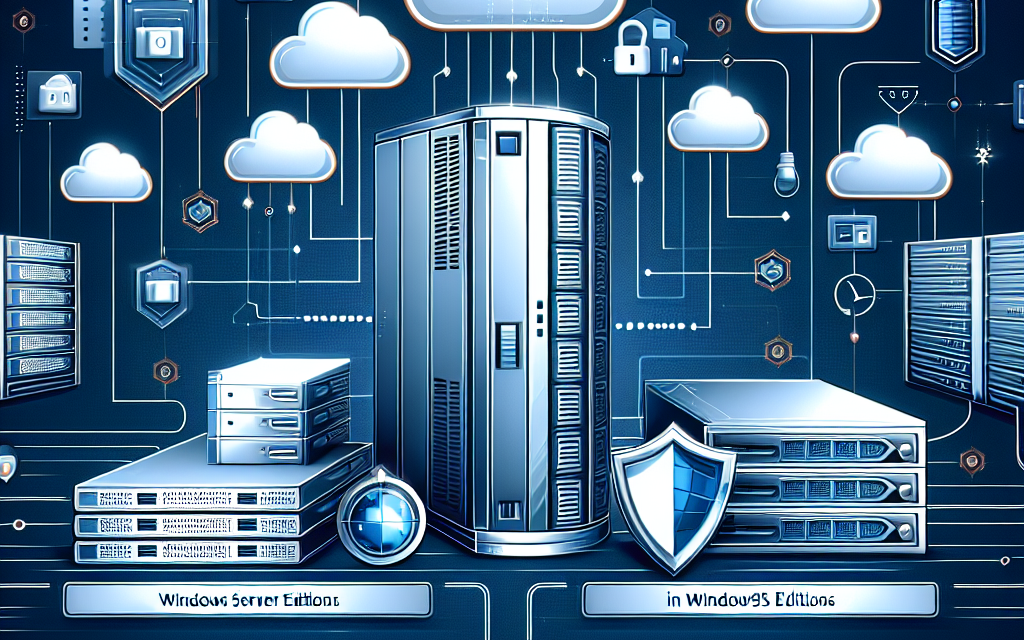Introduction
In today’s digital landscape, data security is paramount, especially for enterprises managing sensitive information. Windows Server editions offer various storage security features that vary depending on the edition. This article aims to explore and compare the storage security options available in different Windows Server editions, helping IT professionals make informed decisions tailored to their organization’s needs.
Overview of Windows Server Editions
Before diving into storage security features, let’s briefly highlight the main Windows Server editions:
- Windows Server Standard: Suitable for physical or minimally virtualized environments.
- Windows Server Datacenter: Best for highly virtualized data centers and cloud environments.
- Windows Server Essentials: Designed for small businesses with up to 25 users.
- Windows Server Foundation: Aimed at small businesses with basic requirements.
Key Storage Security Features
1. BitLocker Drive Encryption
Availability: Windows Server Standard and Datacenter
BitLocker is a powerful encryption feature that provides full-disk encryption to protect data at rest. It safeguards against unauthorized access to data on lost or stolen devices. In both Standard and Datacenter editions, BitLocker can encrypt volumes with user-configurable key lengths, providing flexibility based on security needs.
Key Points:
- Protects entire drives, including operating system drives.
- Supports hardware-based encryption via Trusted Platform Module (TPM).
- Can integrate with Active Directory for key management.
2. Storage Spaces and Storage Pools
Availability: Windows Server Standard and Datacenter
Storage Spaces allows admins to create storage pools from various disks, enabling redundancy and improved performance. In terms of security, it includes features like data mirroring and parity to protect against data loss.
Key Points:
- Facilitates the creation of resilient storage pools.
- Supports various resiliency types (two-way mirror, three-way mirror, parity).
- Allows for system reliability and data protection.
3. File Server Resource Manager (FSRM)
Availability: Windows Server Standard and Datacenter
FSRM is a feature for managing and classifying files stored on file servers. It can help enforce data retention policies, implement quotas, and generate reports.
Key Points:
- Helps control data usage and maintain compliance with regulations.
- Provides active monitoring of file activities.
- Capable of applying file screen templates to restrict certain file types.
4. Access Control Lists (ACLs)
Availability: All Editions
ACLS are a fundamental aspect of NTFS file system security, allowing granular permission settings for users and groups. This feature is available in all Windows Server editions.
Key Points:
- Customizable permissions for files and folders.
- Ensures that only authorized users can access sensitive data.
- Supports inheritable permissions for ease of management.
5. Dynamic Access Control
Availability: Windows Server 2012 and Later (Standard and Datacenter)
With Dynamic Access Control, administrators can set access policies based on conditions such as user attributes and data classification.
Key Points:
- Provides more granular control than traditional ACLs.
- Integrates with Active Directory and claims-based access.
- Allows for real-time updates to access rights based on changing user attributes.
Special Features in Datacenter Edition
The Datacenter edition offers additional features beneficial for larger or virtualized environments:
- Encrypted Virtual Machines: Protects virtual machine disk files from unauthorized access.
- Storage Replica: Enables synchronous and asynchronous replication of storage volumes for disaster recovery without the need for specialized hardware.
Best Practices for Enhancing Storage Security
- Regular Audits: Regularly review access permissions and modify them as necessary.
- Data Classification: Use tools like FSRM to classify and manage sensitive data.
- Implement Multi-Factor Authentication: For access to critical storage servers, ensure MFA is in play.
- Backup Encryption: Always encrypt backups using tools like BitLocker for extra security.
Conclusion
Choosing the right Windows Server edition for your organization should hinge on understanding the storage security features available. While Standard and Datacenter editions provide robust options, Datacenter offers enhanced features suitable for larger enterprises. Consider your specific security needs, compliance requirements, and budget as you make your decision. By leveraging the available storage security features, organizations can better protect their data and maintain trust with their clients.
WafaTech hopes this comparison empowers you to make informed choices regarding your Windows Server deployment and data security strategies. For more insights into IT solutions and best practices, stay tuned to our blog!





